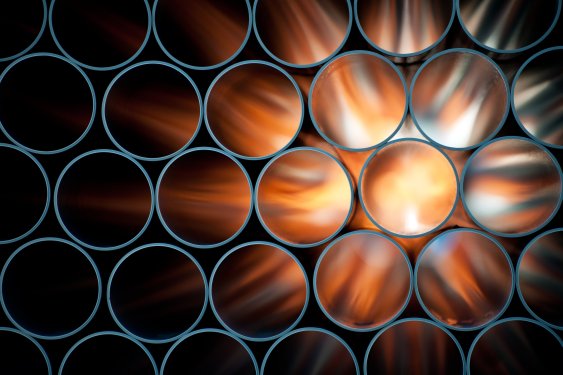On a farm near Manchester, New Hampshire, I was recently treated to a gusher of dirty water. This is not the sort of thing most startups would show a reporter, but for Dig Energy, the mud is a feature, not a bug, of its compact drilling rig.
The startup, which has been operating in stealth for the last five years, developed the water-jet drilling rig in an effort to make geothermal heating and cooling so inexpensive that it will displace fossil fuel boilers and furnaces. The rig is central to that mission, promising to slash drilling costs by up to eighty percent.
On Tuesday, Dig Energy emerged with five million dollars in seed funding. The round was led by Azolla Ventures and Avila VC with participation from Baukunst, Conifer Infrastructure Partners, Koa Labs, Mercator Partners, Drew Scott, and Suffolk Technologies.
Heating and cooling represent about a third of all energy use in the United States. In data centers, the figure can be as high as forty percent. Geothermal can slash HVAC energy use while also saving grid operators up to four billion dollars annually. To help stabilize the electrical grid, the United States needs to drill six million feet of geothermal borehole daily through 2050, according to the Oak Ridge National Laboratory.
But geothermal does not come cheap, at least not at first. In the United States, geothermal has been one percent of building installations for decades, Dig co-founder and CEO Dulcie Madden told TechCrunch. That is despite the technology’s low operating costs. It is really just because the upfront cost is so expensive.
There are two main flavors of geothermal. Enhanced geothermal drills down thousands or tens of thousands of feet. Companies drilling that deep tap very hot temperatures to generate electricity. The other, shallow geothermal, which is what Dig is focused on, is usually limited to hundreds of feet. At those depths, the ground maintains a consistent temperature year round, which is perfect for heating and cooling residential and commercial buildings.
In shallow geothermal, pipes carry water underground where it transfers heat to or from the earth. In the summer, it dumps excess heat, and the chilled water returns to the surface to cool a building. In the winter, it absorbs heat to warm it.
Installing the ground loop, as the underground piping is called, represents around thirty percent of the total cost of a ground-source heat pump. This is one of the main reasons the technology remains more expensive than conventional heating and air conditioning systems. Tackling those costs was high on Dig’s list. When they were getting started, they asked if they could build a lower-cost drill.
Madden and her co-founder, husband Thomas Lipoma, began exploring the space five years ago after winding down their previous startup, Rest Devices. They soon stumbled upon old research describing how to use water jets instead of traditional cutting bits to bore into the earth.
While there had been plenty of research into the technology, it still was not ready for prime time. A lot of the drilling technology has trickled down from oil and gas, Madden said. This means it tends to be large, expensive, and overpowered for something like geothermal at the depths Dig is plumbing.
Dig has spent years refining the design of its rig, drilling test holes near its offices in New Hampshire. They have drilled through soil, gravel, clay, sand, and a range of different rock types, including sandstone, limestone, granite, slate, and shale.
Today’s geothermal drill rigs can do the same, but they are massive by comparison. The most commonly used versions sit on the back of large trucks. For easily accessible sites, they work well enough. But they are unable to squeeze through side lots into people’s backyards, and at crowded commercial building sites, they occupy precious free space.
While Dig’s prototype is not ready for commercial use, what I saw was substantially smaller than widely used geothermal drill rigs. The holes it drills are also straighter than those made by traditional rigs. Together, those two details mean that Dig’s bore holes can be placed closer together, which is a boon for any developer.
When it is ready for its first commercial pilots, something this seed round will help accomplish, Dig’s rig will grow in size slightly. However, it will not require the large, double-axle trucks that currently dominate the industry.
The company is planning to sell the devices to drillers, giving them another option for existing projects and potentially opening avenues to new ones. Other companies are also exploring the technology. Madden said we should not require people to buy a two million dollar rig. It should be something that is lower cost so they can get into the business. She added that geothermal should be in one hundred percent of buildings, but it is only in one percent. The question is how to close that ninety-nine percent gap. It is effectively an untapped market.

